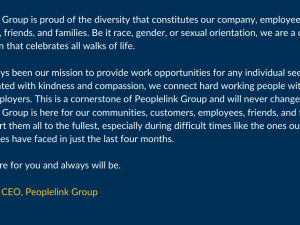
It’s no secret that employee retention is crucial to organizational growth. When a company loses its top performers, it becomes a costly and timely (and stressful) endeavor to find and onboard a replacement. What’s more, turnover often negatively impacts the rest of a team’s morale, productivity and outlook on their future with the organization.
While we can all agree employee retention is important, there’s still the issue that top talent is leaving for greener pastures—even when employers have retention strategies in place. Understandably, this can leave leaders skeptical of the effectiveness of employee retention. So much so that they might be overlooking the reality that their current strategies (or lack thereof) can have an adverse effect on the company’s culture and financial performance in addition to risking its competitive edge.
In this article, we examine why so many companies have trouble retaining their workers and explore employee retention strategies that can work for your business.
The Real Cost of Losing Talent
Replacing top performers can cost a company two to three times the resignee’s annual salary. But, of course, that cost doesn’t capture the time, energy and productivity lost while leaders scramble to find a replacement. The resources spent on the search process alone could be enough to send your company into an unexpected tailspin. When an employee leaves, employers must invest time and money into:
- The hiring process: advertising open positions, screening resumes and interviewing candidates.
- The onboarding process: on average, employers spend six to nine months of an employee’s salary to find and train their replacement.
- Upkeeping productivity: it can take months for new hires to ramp up their productivity to the level of their predecessor.
- Maintaining team morale: when a teammate leaves, it can take a toll on the rest of the team to the point they may also consider leaving.
Bottom line: it can be very costly to replace a top performer, which is why it’s so essential for employers to have a comprehensive employee retention strategy in place.
Why We Aren’t Winning the War on Employee Retention
To understand why so many organizations struggle with employee retention, we need to look at the primary factors that contribute to people leaving their jobs.
Reasons Top Performers Leave
- Insufficient salary
- Lack of competitive benefits
- Little work/life balance
- Boredom
- Poor onboarding experience
- Feeling overworked or under-supported
- No career development
- Dissatisfaction with company culture
- Concern over company performance
- Little or no employee recognition
- Better opportunities elsewhere
5 Strategies to Retain Top Talent
It’s clear that employee retention is all about creating an environment where top talent will flourish. So, what ways can employers help their team feel happy, engaged and valued for the long term?
1. Onboarding
Onboarding is a new hire’s first introduction to a company’s culture, co-workers and processes. Companies with a robust onboarding program improve new hire retention by a whopping 82% and productivity by more than 70%. An organization’s onboarding process should teach new hires not only about the job at hand (and give them the resources to succeed!) but also about the company’s culture and where they fit into it.
2. Compensation
Dissatisfaction with compensation is the number one reason employees leave their current jobs. Therefore, it’s not only critical for employers to pay their team competitively but also regularly evaluate and adjust salaries based on employee performance and what is fair according to the current job market.
3. Learning & Development
One of the best ways to retain employees is to structure their learning and development in a way that not only helps the company grow but gives employees valuable skill sets to boost their own professional value and career longevity. Companies can invest in their team’s professional growth and personal development through mentorship programs, courses, certifications and conferences.
On top of this, a great way to incorporate more learning and development opportunities is simply asking your team how they want to grow and creating a plan that revolves around their career goals.
4. Open Communication
To retain top talent, companies need to nurture a culture of open communication where employees feel comfortable speaking their minds. While it’s important for leaders to encourage growth and innovation, they should also make it known that constructive feedback is welcomed and encouraged. It’s crucial for leaders to model an environment of honesty and transparency, as well as offer regular opportunities for input that surfaces both praise and criticism on projects, performance and company culture.
5. Employee Recognition
Employees are more likely to stay with a company if they feel they’ve been well-treated and appreciated. It can be as simple as thanking an employee when they go the extra mile, offering rewards to incentivize new ideas, or developing a regular recognition program with quarterly or monthly meetings to honor a person’s hard work and milestones.
Let’s Build Your Future Together
At Peoplelink Staffing, we focus on helping employers build and maintain their most valuable asset—their people. With a comprehensive approach to staffing and recruiting, we connect highly skilled professionals with the best companies. Contact us today to find out how we can help you find and retain top performers.




